With the right lawn fertilizing system, you can achieve a dreamy, healthy, and vibrant lawn. However, figuring out when and how to fertilize your lawn in a sustainable and effective way can be tasking. Before you start fertilizing, there are some expert tips you should consider.
How To Choose The Right Lawn Fertilizer

Choosing lawn fertilizer can feel like trying to navigate a maze because you have to choose the right one, especially with all the options available on the market. You want your lawn to be the envy of the neighborhood, vibrant and green, but that means understanding some essential aspects of lawn care guides.
The secret isn’t just grabbing any bag off the shelf; it’s important to consider fertilizer selection tips so that you can get the best fertilizer for lawns. It involves a few key principles, and trust me, once you grasp these concepts, you’ll be well on your way to achieving that lush, healthy lawn you’ve always wanted.
So let’s dig in!
Understanding Lawn Fertilizer Fundamentals

To make an informed decision about lawn fertilizer basics, it’s crucial to understand what makes them tick. Fertilizer types are essentially food for your grass, providing the much needed nutrients that promote healthy growth and resilience.
Typically, they come in granular vs. liquid fertilizer, each having its merits. Granular fertilizers are great for longer-lasting effects, while liquid ones offer quicker grass nutrient essentials.
Knowing the fundamentals helps you choose a product that not only fits your lawn’s needs but also aligns with your fertilization philosophy whether it be quick fixes or gradual feeding, understanding these basic concepts is your first step towards a thriving yard.
Different Types Of Lawn Fertilizers Explained
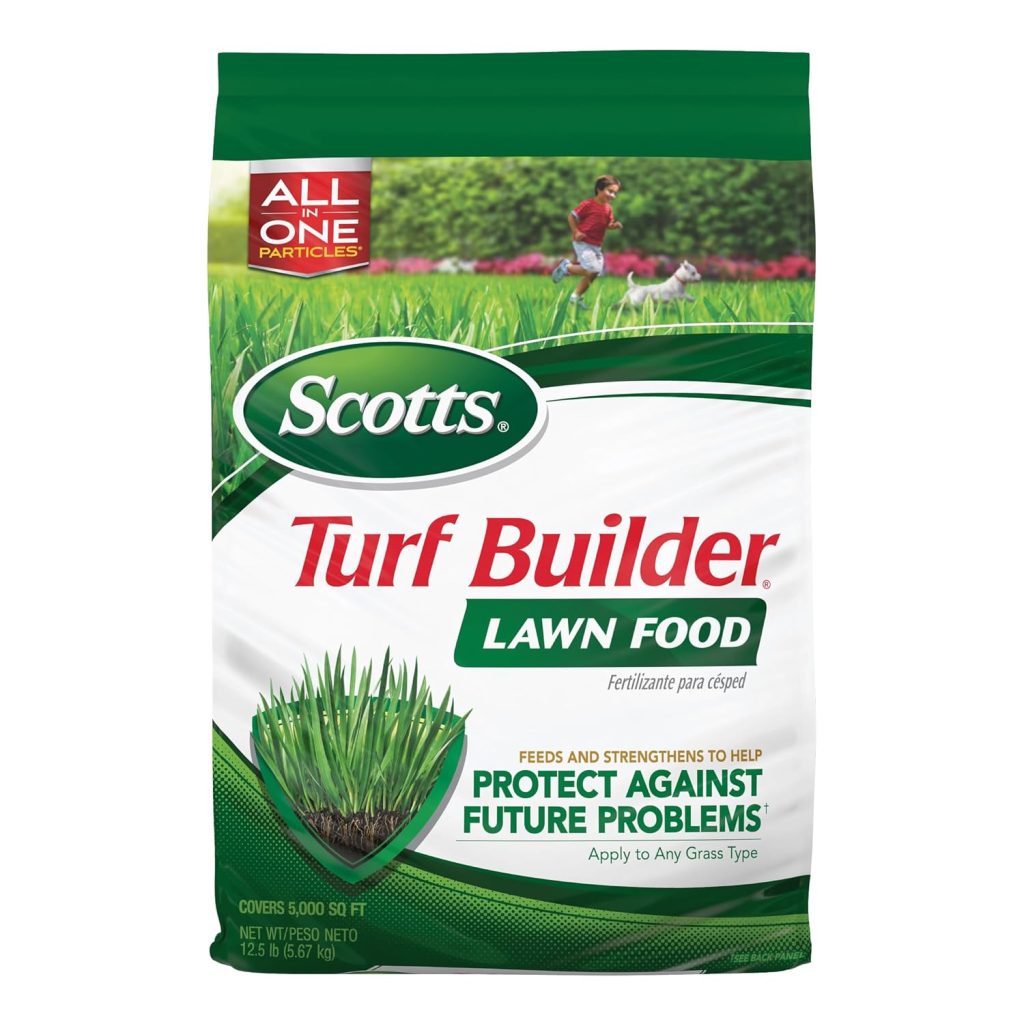
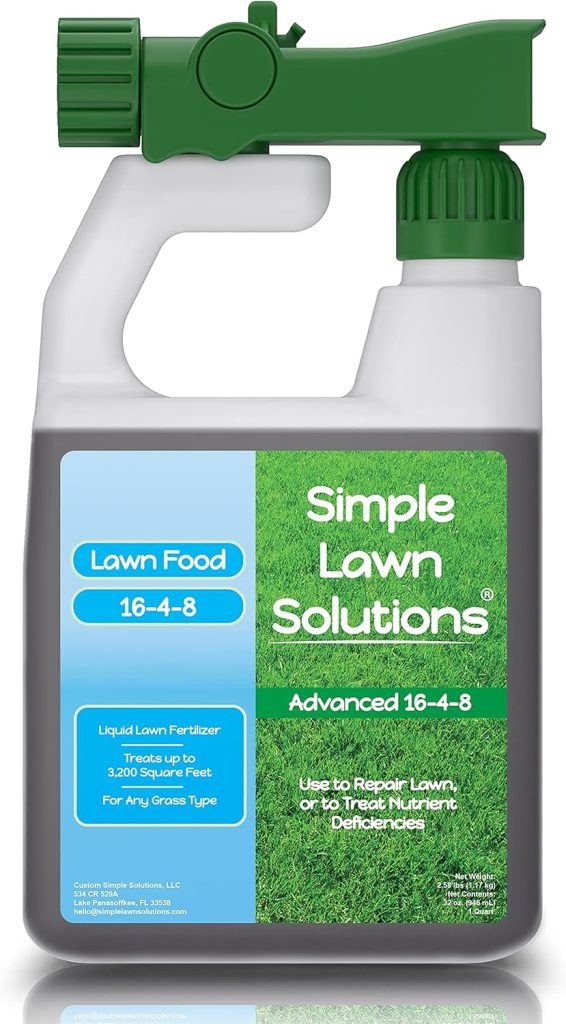

All Can be Found on Amazon From The Links Below
Next up, let’s talk about the different types of lawn fertilizer types. You might have heard of organic vs synthetic fertilizer, which are the two main categories. Organic options are mostly derived from natural sources, like compost or manure.
Think of them as slow-release food for your lawn, promoting sustainable health by improving soil structure. On the other hand, synthetic fertilizers offer immediate nutrient availability and usually come in precise formulations. Knowing your grass type and specific fertilization needs helps you decide which type might be more beneficial for your lawn’s condition.
Here are our top picks at a glance:
- Scotts Turf Builder Lawn Food
- Simple Lawn Solutions Liquid Fertilizer
- Scotts Green Max Lawn Food
- The Andersons PGF Complete
So, whether you want to go with the natural lawn care route or opt for the quick-acting fertilizers, there’s something out there tailored just for your grassy patch.
Key Nutrients: Understanding The N-P-K Ratio

When you’re standing in the garden center, you’ll likely see numbers on fertilizer bags, and this is your NPK fertilizer guide: Nitrogen, Phosphorus, and Potassium. These three lawn nutrient needs are vital for your lawn’s growth.
Nitrogen is your go-to for lush, green leaf growth, phosphorus supports strong root development, and potassium helps with overall plant health, making it more resistant to disease and environmental stress.
Understanding fertilizer numbers and the function of each grass fertilizer nutrient allows you to cater to your lawn’s specific growth stage or issues. For instance, if you’re aiming to promote root growth and recovery, a fertilizer high in phosphorus is what you need. So make sure to check that N-P-K ratio closely; it’s more than just numbers; it’s insight into what your grass needs!
Author’s Note: Check out our post Fertilizing Tips For Healthy Grass Revealed for an essential lawn care fertilizing guide!
Ideal Fertilization Timing For Optimal Growth
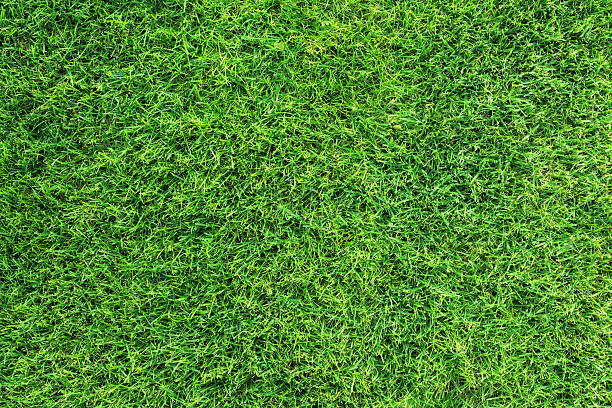
Timing is crucial when it comes to lawn fertilization. Want to know when to fertilize lawn? Each season brings unique challenges and opportunities for your grass, which is why seasonal lawncare and fertilizer application timing is instrumental to indicating when you should be applying fertilizer.
For cool-season grasses like Kentucky Bluegrass, A fertilizer with a ratio like 10-0-20, 5-0-15, or similar (low N, high K, and little to no phosphorus unless a soil test shows you need it, more on testing and ratios later) is recommended.
Meanwhile, warm-season grasses like Bermuda and Zoysia thrive best with fertilizers such as 20-0-10 work well during the growing season. The high nitrogen encourages dense, green growth, while moderate potassium boosts heat and drought tolerance.
This seasonal knowledge and optimal fertilization schedule helps ensure that your lawn absorbs nutrients most effectively during its active growth phases. Applying fertilizer too early can lead to nutrient loss through leaching or cause unnecessary stress to your lawn, while waiting too long can miss critical growth windows. Knowing when to fertilize
can give your lawn a fighting chance, setting it up for success no matter what the weather throws at it.
How To Decode Lawn Fertilizer Labels
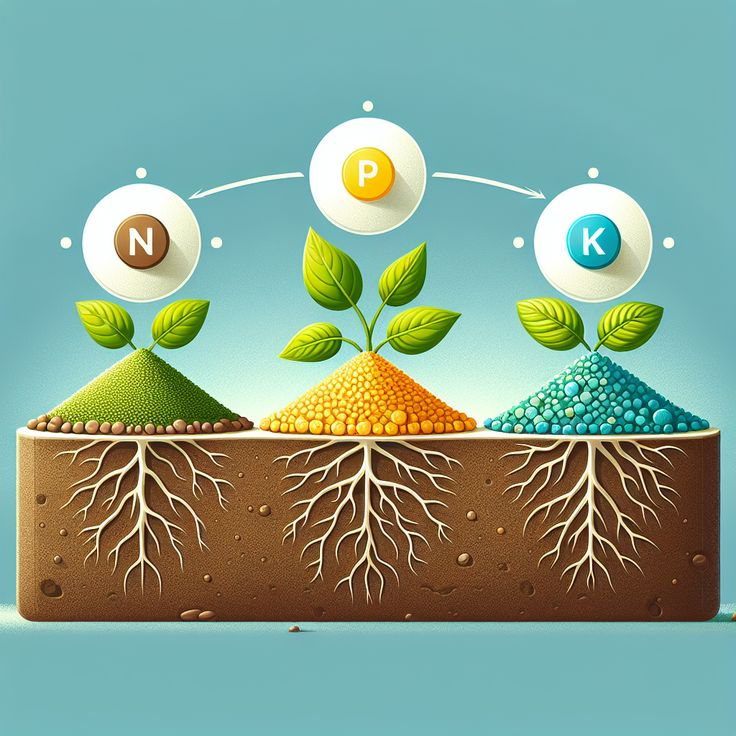
Reading fertilizer labels can feel like deciphering some ancient code. You’d often see three numbers N-P-K, which tell you exactly what you’re getting. The first number is the percentage of nitrogen, the second is phosphorus, and the third is potassium.
But don’t stop there! Go further for additional information, the fertilizer label explains, which specifies whether the fertilizer is fast or slow-release, as well as any micronutrients that may be included.
Understanding fertilizer packages can help you select the right product for your lawn’s specific needs. Ideally, you should look for fertilizers that provide a good balance of nutrient ratios, explained, tailored to your lawn type and condition.
Author’s Note: Check out our post Understanding Fertilizer Labels For Lawns Made Easy for more details on decoding fertilizer packaging.
So don’t shy away from studying those labels; they’re your best guide to giving your lawn precisely what it needs!
Fertilizer Selection Based On Grass Type
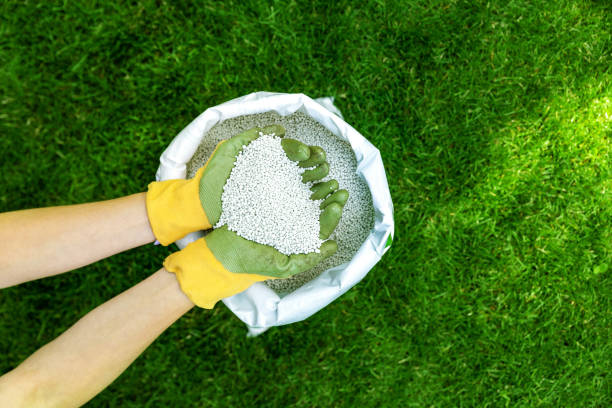
Your choice of fertilizer should also be influenced by the type of grass you have, as the needs of cool-season grasses differ significantly from warm-season varieties. That’s why it’s crucial to understand the fertilizer for grass types. Cool-season grass fertilization with grasses, like Kentucky Bluegrass, thrives in the northern regions and prefers cooler temperatures.
They generally require more nitrogen for lush growth during early spring and fall. On the other hand, warm-season grass nutrients and grasses, such as Bermuda and Zoysia, flourish in southern climates and need fertilization in the warmer months.
Choosing the right grass-specific fertilizer needs not only aids growth but also boosts your grass’s health and appearance. So, make sure to familiarize yourself with your lawn’s grass type to get the most from your fertilization efforts!
Organic vs Synthetic Fertilizers: Pros And Cons

Found On Amazon
When it comes to choosing the right lawn fertilization options, there’s much to choose from. Each type offers unique benefits, and understanding the differences can help you make the best choice for your lawn, garden, or crops. Some pros and cons of organic fertilizers include that they are derived from natural plant and animal materials, such as compost, manure, bone meal, and seaweed.
They’re minimally processed, preserving their natural form to enrich soil health gradually. On the other hand, synthetic fertilizers’ benefits are formulated in laboratories and consist of chemically derived nutrients, including nitrogen, phosphorus, and potassium.
Although organic fertilizers nourish the soil over time, creating a more sustainable environment for plants by enhancing soil structure and promoting microorganism activity, organic fertilizers must break down first; they release nutrients slowly.
This can be a drawback for plants that need a quick nutrient boost. Synthetic fertilizers may be more suitable when you need quick results or a fast remedy for nutrient deficiencies.
They are convenient and effective for immediate plant growth, but following application guidelines closely is important to avoid negative side effects on the soil and environment. Over time, synthetic fertilizers can strip the soil of its natural microorganisms, reducing long-term fertility and soil health. That is why you have to be intentional about making sustainable lawn care choices.
Customizing Your Lawn Fertilization Schedule

Every lawn has its unique needs based on a variety of factors, including soil quality, grass type, and local climate conditions, and should have a custom lawn fertilizer schedule.
Customizing your lawn fertilization schedule involves more than just following a one-size-fits-all approach. Conducting a soil test for lawn care can reveal nutrient deficiencies, enabling you to tailor your fertilization strategy.
Author’s Note: Check out the more accurate Mail-in Lab MySoil Soil Test Kit or the Convenient At-Home Rapitest Soil Test Kit for diagnosing nutrient deficiency and preparing your soil for the planting season!
Additionally, you should consider the previous year’s growth and performance to adjust applications accordingly and avoid fertilizer application issues and common lawn care pitfalls.
Perhaps your lawn thrived last summer but struggled last spring, hinting at the need for an early spring fertilization this time around. Keep a record of your lawn’s health over the seasons, and you’ll develop the best fertilization schedule tailored just for your green oasis.
Common Mistakes To Avoid In Lawn Fertilization

As with any gardening venture, avoiding fertilizer errors and common lawn care pitfalls can save you time, money, and frustration. One notable mistake is applying too much fertilizer and fertilizer application issues, which can lead to brown patches and nutrient runoff into waterways, doing more harm than good.
Another blunder or lawn fertilization mistake is ignoring the N-P-K breakdown, which can lead you to choose a fertilizer that doesn’t meet your lawn’s needs. Using a fertilizer not designed for your specific grass type can also lead you to disappointment. Paying attention to these mistakes not only helps you dodge problems but also enhances the overall health of your lawn, pushing you closer to that dream landscape!
Expert Tips To Enhance Fertilizer Effectiveness

To truly optimize the benefits of your chosen fertilizer by maximizing fertilizer effectiveness, consider a few nutrient absorption tips that can enhance nutrient absorption and overall lawn health. First off, watering properly after fertilization is crucial. A lawn needs moisture to absorb those nutrients effectively.
Second, law aeration benefits cannot be overemphasized. Consider aerating your lawn annually; this process helps break up compacted soil, allowing air, water, and nutrients to penetrate deeper.
Lastly, some good lawn overseeding advice is essential, as your lawn can fill in bare patches where weeds often flourish, thereby creating a denser turf that crowds out unwanted invaders. By implementing these strategies, you don’t just improve your fertilization results; you cultivate a thriving lawn that’s the envy of all your neighbors.
Tools And Resources For Choosing Fertilizers
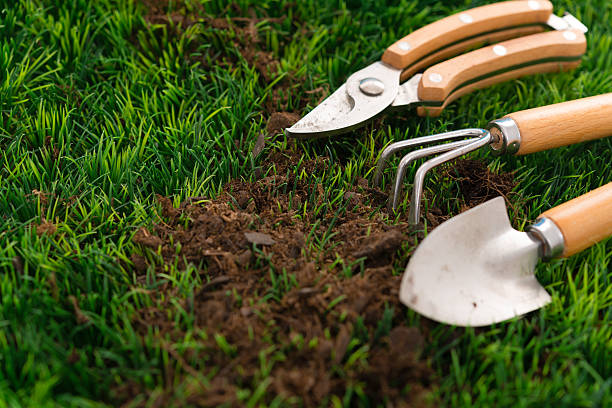
With so much information out there, finding the right fertilizer can feel overwhelming, but don’t sweat it! There are fantastic fertilizer selection tools and gardening resources that can simplify the process.
From soil testing for lawns using soil testing kits gives you a snapshot of your lawn’s nutrient levels, while local extension services offer tailored advice suited to your specific region.
Online forums and gardening communities can also be a goldmine of information where fellow lawn enthusiasts share their successes and failures. Additionally, many retailers provide expert guidance, so don’t shy away from asking questions; their insights can steer you in the right direction and help you discover the perfect fertilizer for your lawn.
Conclusion
Choosing the right lawn fertilizer may seem stressful or tasking, but understanding how to navigate the ins and outs of healthy lawn care can empower you to make informed decisions that contribute to vibrant grass outcomes and a healthy lawn.
By grasping the fundamentals, recognizing your grass type, and customizing your approach based on specific needs, you’re setting yourself up for success and lush lawn results. Remember to monitor your lawn’s health, stay aware of common mistakes, and seek out resources and effective lawn fertilization.
In the end, a well-fertilized lawn isn’t just about nutrients; it’s the foundation for a vibrant and inviting outdoor space that everyone can enjoy!

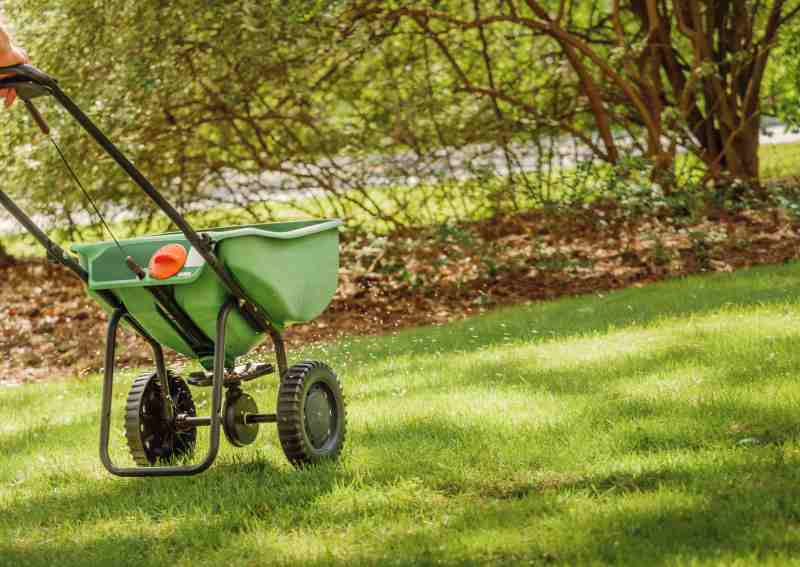

1 thought on “How To Choose The Right Lawn Fertilizer: Expert Tips For A Healthy, Lush, And Vibrant Yard”